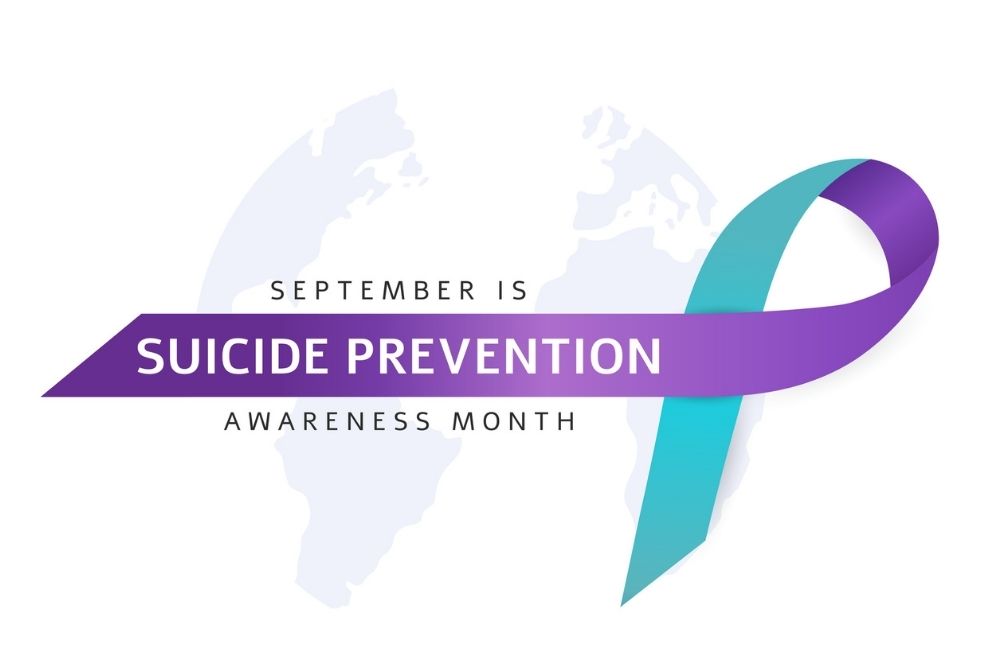Suicide is a difficult topic to think about and discuss. Most of us have never been taught how to talk about this challenging subject. Unfortunately, one of the best ways to prevent suicide is to talk about it, so it’s important to find ways to move beyond our discomfort.
September is National Suicide Prevention Month, so there is no time like to present to learn more. At The Pavilion in Williamsburg, Virginia, we want you to have the tools to recognize if someone in your life is dealing with suicidal thoughts and to be able to keep them safe.
The Purpose of Suicide Prevention Month
During September, local and national organizations plan initiatives to:
- Raise awareness about suicide among the general population
- Increase knowledge about resources to prevent suicides
- Spread hope among people who are struggling with suicidal thoughts
- Ignite efforts to make changes that will reduce suicides
How You Can Help
You have the power to save lives. You can use your social media accounts to share resources for people who are having suicidal thoughts, such as:
- The Suicide and Crisis Lifeline (988)
- The National Alliance for Mental Illness (NAMI)
- Local mental health initiatives
- The Trevor Project
- The Trans Lifeline
In addition, contact your elected officials to ask them to increase funding for mental health services and talk to the people in your life about mental health and suicide.
Recognizing Risk Factors
Being able to recognize who is at risk for suicidal ideation may make you more sensitive to people who are likely to be struggling with suicidal thoughts. Some of the biggest risk factors include:
- Mental health disorders, especially mood disorders
- Impulsive and/or aggressive behaviors
- Painful or chronic health issues
-
- Suicide such as having a history of attempts, family history of suicide, clusters of suicide deaths nearby, heavy media coverage of suicides
- Recent losses, including financial, work, housing, or a significant relationship
- Access to items they would use to end their life such as pills, guns and ammunition, or sharp objects
- Working in a field that increases their suicide risk
- Unwilling or unable to get help
- History of abuse or bullying
Warning Signs
Once you know who is at highest risk, you may be better able to spot indications that someone is likely to be having thoughts of ending their life:
-
- Sudden improvement in mood after a lengthy period of sadness – this may signal that they have finalized their plans to end their life
- Making preparations such as paying off debts, buying or reviewing life insurance, writing or updating a will, giving away beloved possessions, or saying goodbye to friends and family
- Increased substance use – many people who are suicidal will get drunk immediately before an attempt, because it is easier to follow through if they are not sober
- Withdrawing from friends, family, and colleagues
- Gathering items they would use to kill themselves
- Engaging in self-harm – although not everyone who engages in self-harm is suicidal, it is common for people who engage in self-harm to become suicidal if they do not get help
- Talking or writing about death, dying, wanting to die, feeling trapped, stuck, or worthless (even if they claim to be joking)
- Big changes in hygiene, appearance, sleep patterns, appetite, substance use, or mood
Responding to Suicidal Thoughts
If you identify that someone you know is at risk or showing red flags for suicidal ideation, your next step is to talk to them directly about what you’re noticing. Although this may be uncomfortable, this is the best way to help them stay safe:
- Start with your observations and reasons for concern.
- “I know you have been through a lot, and I am worried about you. A lot of people who have been through things like that consider ending their lives.”
- “Are you thinking about killing yourself?”
- “Have you made a plan for how you would end your life?”
- Give them a chance to talk about what they are feeling.
- Offer to help them call their doctor, therapist, or a crisis line.
- Do not guilt-trip, make threats, call them selfish, or raise your voice.
- Do not leave them alone.
- Remove/secure anything they could use to hurt themselves, especially guns.
- If they cannot make a plan to stay safe, call 911 or take them to the nearest emergency room.
- Check back after you connect them with help, to make sure they are okay and to keep them engaged with social support. Resist the urge to treat them differently afterward. People who struggle with mental illness and suicidal thoughts don’t want to be treated differently by their loved ones.
At The Pavilion, we offer detox, inpatient, partial hospitalization, and intensive outpatient services for people who are struggling with behavioral health diagnoses or emotional distress. Our team offers trauma-informed, evidence-based care that is tailored to meet the needs of each patient we serve.





